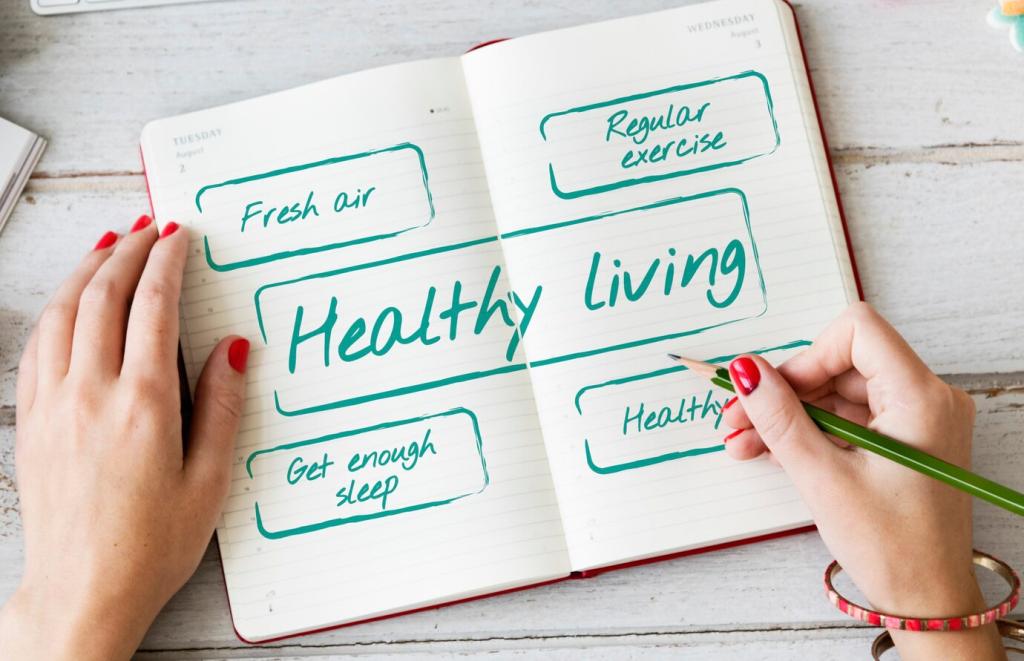Selected theme: Healthy Eating Tips for Home Fitness Routines. Welcome to a practical, energizing guide that blends kitchen wisdom with living-room workouts, so you can fuel smarter, move better, and enjoy the results. Share your goals and subscribe for weekly inspiration.
Fueling Before Your Home Workout
Timing Your Pre-Workout Meal
A balanced meal two to three hours before training gives energy without digestive drama, while a lighter snack thirty to forty-five minutes out can top off the tank. Try banana with peanut butter, yogurt with honey, or toast with cottage cheese, and note how timing affects your performance.
Balanced Macros for Steady Energy
Prioritize carbohydrates for quick fuel, pair moderate protein for staying power, and keep fats light to speed digestion. Oatmeal with berries and chia, or rice with egg whites and spinach, delivers steady energy without heaviness. Track what works and tell us your favorite combo.
Quick Snack Ideas from a Tiny Kitchen
A friend swears by rice cakes with hummus and cucumber when she has five minutes before a ride. Dates with almond butter, or a small smoothie with kefir and mango, also shine. What’s your small-space, big-energy snack? Share your best two-ingredient lifesaver.

Hydration That Helps You Move
For sessions under an hour, water usually wins. If you sweat heavily, train in heat, or go long, add electrolytes—especially sodium—to maintain balance. Choose low-sugar options and adjust to taste. Not sure? Start simple, then refine based on how you feel and recover.


Hydration That Helps You Move
A quick 500 milliliters on waking changed my morning workouts from sluggish to smooth. I add a squeeze of lemon and a pinch of salt on hot days. Try it for a week, notice energy and focus, and tell us what small hydration habit sticks for you.
Smart Post‑Workout Recovery at Home
Forget the panic about a tiny anabolic window; total daily protein matters most. Aim for roughly 1.6–2.2 grams per kilogram of body weight, spaced across meals with 20–40 grams each. Include leucine‑rich sources like dairy, eggs, or tofu to spark muscle repair.
Cook two proteins, two carb bases, and two veggie mixes. Think chicken and tofu; rice and quinoa; roasted peppers and broccoli. Rotate sauces for variety, and you’ll assemble meals in minutes. Test it for one week and tell us what combination saved your busiest day.

Micronutrients That Support Training
Vitamin D influences muscle, immunity, and mood; iron carries oxygen; omega‑3s help manage inflammation. Find them in eggs, sardines, lentils, leafy greens, and walnuts. If concerns arise, discuss testing with a clinician, then tailor food choices accordingly. What food will you add first?
Micronutrients That Support Training
Aim for twenty‑five to thirty‑five grams per day from beans, berries, oats, and vegetables. Time very high‑fiber meals away from intense workouts to avoid discomfort. Add fermented foods for diversity. My training smoothed out once I respected my gut. What fiber tweak helps you most?




Mindful Eating Meets Home Fitness
Before snacking, pause for ninety seconds, sip water, and ask what you truly need. On heavy training days, plan bigger portions; on rest days, scale gently. This flexible approach keeps momentum and enjoyment high. What cue helps you pause without feeling restricted?
Mindful Eating Meets Home Fitness
Chew thoroughly, put the fork down between bites, and breathe. I once inhaled meals after late meetings and felt sluggish during workouts. Slowing down improved digestion and energy. Try one mindful minute today and share how your next session feels.
Join our mailing list
